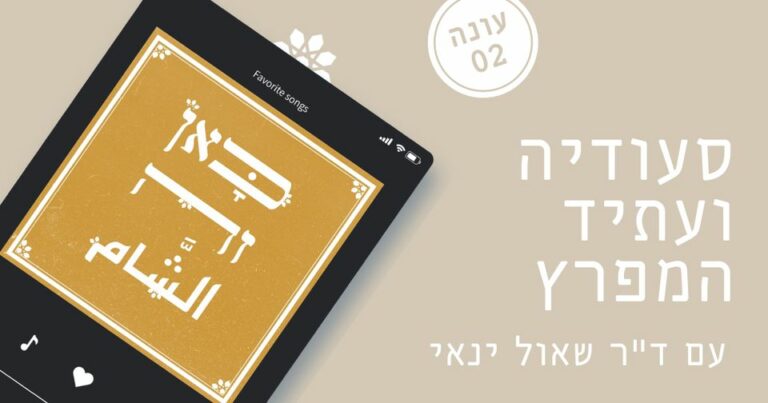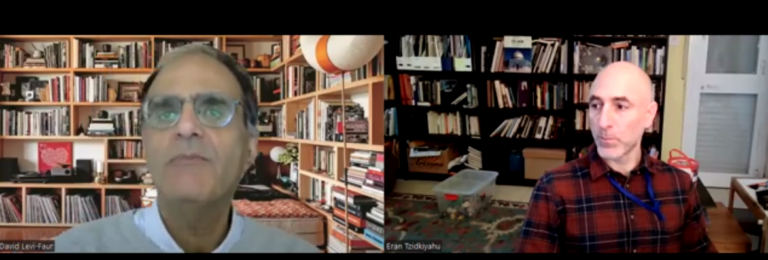This is the second article in a series explaining the issue of Jerusalem as a core issue in the Israeli Palestinian conflict. For previous articles click here
Many believe that there will be no end to the conflict as a whole without an agreeable solution in Jerusalem. Despite the critical importance of the issue only few really understand what the Jerusalem question is all about.This does not prevent many people to hold strong opinions about Jerusalem, opinions which in many cases are influenced more by symbols and myths than reality. In the words of the Zionist poet Naomi Shemer, Jerusalem is a city “captive of its dream”.
—
In the previous article we gave a brief survey of how East Jerusalem was created within a few days in June 1967. We also gave a quick survey of the developments on the ground leading to the first Intifada that started in December 1987. The popular uprising that sprung in the territories and in Jerusalem, took the region into a spin that ended with the peace process in late 1991.
From Madrid to Oslo through Washington
The peace process officially started with an international conference that took place in Madrid on October 1991 under the co-sponsorship of the USA and the already crumbling USSR. The Likud government headed by Yitzhak Shamir met with different delegations from the Arab world. The Palestinian delegation included only residents of the territories (the “inside” leadership, not officially affiliated with the PLO leadership in Tunis). It was officially a part of the Jordanian delegation although it eventually made an independent-like appearance. During the negotiations that led to the conference, USA secretary of state James Baker met the Palestinian delegation in Jerusalem. They demanded to include the city in the talks while Israel tried to keep it out. Eventually Baker accepted Shamir’s objection even to the participation of East Jerusalemites in the Palestinian delegation to Madrid. This was an attempt by Israel to set a pre-condition of keeping Jerusalem out of the talks. Baker accepted this demand in order to bring Shamir to Madrid, even though it meant that the two leading figures in the Palestinian delegation with which Baker himself negotiated, Hanan Ashrawi and Faisal Husseini, were both prevented from officially participating. After the Madrid conference the talks between the Israelis and the Palestinians continued in Washington.
In 1992 the Shamir narrow right wing government was replace by a left wing one. Yitzhak Rabin, heading the Israeli Labor party, became the prime minister. The main topic on the campaign was the peace process. Rabin, who promised to go ahead with the process, won a decisive victory. In 1992 Israelis voted for peace.
Rabin agreed to the official participation of Husseini and Ashrawi (who unofficially lead the Palestinian delegation anyway), but the talks in Washington seemed to be stuck. The subject of Jerusalem didn’t even come up. At this point Rabin gave his approval to a discreet back channel that emerged in Oslo in order to help the Washington talks to reach a breakthrough. Eventually the back channel became the main one and the Washington talks were abandoned. On 13 September 1993, the Oslo accord was publicly signed in Washington between Rabin and Arafat.

The signing was supposed to be the opening note to a series of interim agreements spread on a period of 5 years. In the end of that period, a final agreement would be signed, putting an end to the conflict. The process was to start by the creation of a Palestinian national authority. The hardest issues like settlements, refugees and Jerusalem would be dealt with later on in the process, in the framework of the final agreements.
By signing the Oslo accord Arafat actually bypassed his own messengers to Washington. Fearing to be made irrelevant (despite the complete loyalty of the Washington delegation to him), he compromised on essential issues. He gave up the demand for settlements freeze and accepted to postpone the issue of Jerusalem throughout the interim period, without any guarantees. In return for these compromises, Arafat got from Israel a symbolic gesture of recognition. Israel, for its part, assumed that by taking advantage of the Palestinian imminent split (between Palestinians from the inside and the outside leadership in Tunis), it could get a better deal. Eventually, to some extent, this Israeli “achievement” and the manoeuvers of Arafat sowed in the agreement the seed of its failure.
Almost 200 peace proposals to the city
Five years later the final agreement was nowhere in sight. There was an attempt to start negotiations on a Permanent status agreement in 1996 with what became known as The Beilin-Abu Mazen Document, that referred to Jerusalem and the other core issues. There is no need to bring here in details all the different proposals for peace in Jerusalem. There are close to 200 of those, some made by the best minds in the world. Two important things need to be pointed out:
1) Despite the alleged consensus that Jerusalem is not on the negotiations table, it was actually there all along. Since Israel demands the world’s recognition to its claim for Jerusalem as its capital, the only way for Israel to get this recognition is by getting the Palestinians to recognize it. This would be possible only through an agreement, thus Israel couldn’t (and didn’t) avoid the issue during the talks.
2) Most peace proposals for the city, from Oslo to Annapolis, are based on the recognition of the mere fact that Jerusalem is divided between (at least) two communities that differ from one another in their system of symbols and in their political, cultural and nat
ional affiliation. All of these
proposals offer more or less the same outline:
One united city without barriers dividing it, where both Israeli and Palestinian citizens share two capitals. On the municipal level the city will be divided into independent districts. In the holy basin, the old city and the Temple Mount, a special arrangement is necessary (here the different proposals vary from partition and division all the way to the Vatican model or to the idea that sovereignty belongs to God).
Most proposals argue that the big Jewish neighborhoods in east Jerusalem will remain under Israeli control and be joined to the Israeli capital in west Jerusalem. The Palestinian neighborhoods in east Jerusalem like Bein Hanina and Jabal Mukaber, will join up with the Arab suburbs north and east of the city, like al-Ram and Abu Dis, to form al-Quds, the Palestinian capital. This last point of an Israeli disengagement from Arab neighborhoods in East Jerusalem was brought up on several occasions, including by representative of the Israeli right wing in the past. These principles were also agreed upon by all Israeli governments that ever negotiated with the Palestinians (see here).
But despite the great number of pretty similar proposals, a real debate on the matter doesn’t take place in Israel. The hard and unavoidable questions are not heard: Is Israel willing to do what it takes to get international recognition for its capital in the framework of a final agreement? Does Israel want to give citizenship to all the Arab residents of the city? Does Israel have reservations to the Palestinian residents setting their own religious and cultural way of life? According to Yossi Beilin, a deep look into those questions proves that they are all solvable indeed.
The fall of the process
Soon after it was launched the peace process started to collapse. Extremists on both sides set out to stop it. In February 1994 Baruch Goldstein murdered 29 Palestinian Muslims worshippers in the Cave of the Patriarchs in Hebron. In retaliation Hamas expanded its activity and started to target civilians all over Israel (up to that point Hamas had acted only in the west bank or against security personnel). A series of terrorist attacks issued mainly by Hamas struck all over Israel throughout 1994-95, killing close to 80 Israeli citizens. On 4 November 1995 a Jewish extremist assassinated Prime Minister Rabin, the main driving force behind the implementation of the peace process. This is an excellent example of how terror achieves its goals: fanatics from both sides managed to stop the peace process and brought about a political and a conceptual change in Israel.
In February – March 1996 Hamas killed another 60 Israelis (I myself was minutes away from boarding a bus that exploded in Jerusalem at the time). In May 1996 the right wing Likud party regained power and Benjamin Netanyahu was elected to his first term as Israel’s Prime Minister. Jerusalem occupied a main place in Netanyahu’s election campaign. After his election he used the city as an easy escape path from Oslo.
Netanyahu encouraged the settlers organizations to set out and Judaize East Jerusalem while dismissing the conclusions of a national inquiry committee launched by the previous government to examine the activity of these organizations (the Klugman committee). The newly powered settlement activity in the Arab neighborhoods alongside the rise in house demolitions augmented the tension in the city.
At this point Netanyahu decided to unilaterally open an exit to the walling walls tunnels in the Muslim quarter north of the Temple Mount. The issue of this exit had come up again and again since the early 80s but previous governments had postponed their decision because of the sensibility of the issue. Bibi decided to act and said that the tunnels were “the rock of our existence”. On 24 September 1998?, Israel carved the 17 meters needed to open an exit to the tunnels in the Muslim Quarter, just in front of the first station of the Via Dolorosa north of the Temple Mount. The Palestinian authority reacted with demonstrations in Jerusalem and around the territories. Palestinians confronted Israeli soldiers for the first time since the Palestinian police was formed. The result was riots that lasted for 4 days and that claimed the lives of about 80 Palestinians and 17 Israeli soldiers, and in which 58 Israelis and close to a thousand Palestinians were wounded. This was a colossal failure for Netanyahu. In order to stop the riots he was forced to retreat the IDF from large parts of Hebron and transfer them to Palestinian control. Thus Netanyahu actually chained himself to the process that he was set out to halt.
Another major step taken by Netanyahu to reverse the Oslo accord was made in Jerusalem – building Har Homa. This Jewish neighborhood was built in order to disconnect the Palestinian villages of south East Jerusalem from its natural Palestinian sphere of Bethlehem. The far going implication of this step will be explained more in details in a separate post, but it basically signified this Israeli government’s intention to shape the future by unilaterally creating facts on the ground rather than through negotiations. Netanyahu and Sharon’s attempt to negotiate with Arafat in Wye River was a farce. In 1999 Netanyahu and the Likud party were replaced in government by the Labor party, headed by Ehud Barak.

The Camp David failure and the Clinton Parameters.
Barak promised to conclude the final agreement with the Palestinians, which according to the original plan was supposed to be signed already. In July 2000 Clinton hosted Barak and Arafat to a marathon of peace negotiations in Camp David. It is still not clear why the Camp David summit wasn’t concluded in an agreement, and the official archives are yet to be opened. Based on different testimonies it seems that Barak offered Arafat to establish a Palestinian state on more than 90% of the territories and a partition in Jerusalem including shared sovereignty on the Temple Mount/ al-Haram al-Sharif. Not only did Ar
afat refuse this offer, he also claimed that the Jews had no historical or spiritual attachment to Jerusalem and that if there even was a Jewish temple, it was situated in Hadhramaut near the Gulf of Aden (thus referring to the dubious thesis of Kamel Salibi that the bible came from Arabia). At this point it is said that Clinton lost his temper and banged on the table, reminding him that the Christians also believe that there was a Temple in Jerusalem. This way or the other there was no agreement.
Jerusalem was probably used here only as an excuse not to sign. The sides didn’t seem to be ready for an agreement. The Israelis were frustrated that 6 years after its foundation, the PA had turned out to be inefficient, corrupted and incapable of fighting terror. The Palestinians on their side saw how during the 7 years that had passed since the Oslo agreement, Israel settled more settlers in the territories than in all the 26 years that preceded it (from 1967 to 1993). Both sides felt that they got the short end of the stick out of the peace process.
Since the Temple Mount was in the center of the failure in Camp David in July 2000, in September Ariel Sharon, the head of the opposition, set out to demonstrate the Israeli sovereignty on the mountain. With Barak’s blessing, Sharon announced his planned visit and went on with it despite appeals from Israeli and Palestinian politicians, warning him from the possible outcome. Sharon’s visit to the Temple Mount on 28 September is known today as the opening shot for the second intifada, known in Arabic as Intifadat al-Aqsa. Sharon’s visit was not the deep reason for the second intifada, but it was certainly the trigger for its eruption. Again Jerusalem was used as an excuse to bury the peace process.
In December 2000, when violence was already running wild, Clinton summoned the sides to the Taba summit, on the Israeli Egyptian border. In Taba, Clinton presented a presidential offer for a permanent agreement to end the conflict, known today as the Clinton Parameters.
In his parameters Clinton offered a division of Jerusalem based on a demographic key. Neighborhoods with Jewish Majority will remain under Israeli sovereignty while the Palestinian neighborhoods will pass to Palestinian sovereignty. The Palestinians will get the control over the Temple Mount and the Israelis over the Wailing Wall and a symbolic control under the surface of the Temple Mount. But with the raging violence in the streets and the daily raising body count on both sides, the Clinton parameters were simply inapplicable.
The importance of this offer was in the external neighborhoods more than in the Holy basin. For the first time the international community was willing to recognize the Israeli rule over the big Jewish neighborhoods in East Jerusalem (mentioned in the previous post). The price Israel had to pay in return was to recognize the Palestinian sovereignty in the Arab neighborhoods of Jerusalem (which is also a way for Israel to secure a Jewish majority in the Israeli parts of the city).
A Capital of Terror – Jerusalem during the Second Intifada
During the first years of the second intifada over 1000 Israelis and more than 3000 Palestinians were killed, and tens of thousands were wounded. Within the vicious blood cycle, Jerusalem had a prominent role. Over a third of the Israeli casualties during the first 5 years were killed in Jerusalem. According to Israel Security Agency (Shabak), between October 2000 and October 2005 30 suicide bombings took place in Jerusalem, killing 174 people. Another 21 were killed in shooting attacks, 9 from stabbing, 5 from explosive devices and two more from a car bomb. Hamas and Fatah each launched 13 suicide attacks, three more were launched by the Islamic Jihad and one by an independent terror cell. None of the violent attacks were launched by Fatah activists from East Jerusalem.
The Jerusalem Envelope
In February 2001, Barak’s government collapsed and the Likud party, now headed by Ariel Sharon (Bibi retired from political life in 1999) regained power, in yet another turnover in Israeli politics. Sharon, who was now the Prime Minister, had to justify his hawkish and hard line reputation in fighting terror. In March 2002 about 130 Israelis were killed. In April Sharon decided to launch the largest military operation in the West Bank since the 1967 war – operation Defensive Shield. Soon afterwards Sharon started the construction of the separation barrier between Israel and the West Bank.
The basic idea behind the barrier was that it would bring security through separation between Israelis and Palestinians. This implied that it should be only a temporary barrier, and that the single motivation behind it was security. According to the international law, Israel is allowed to build such a barrier, as long as it does so in its own territory – west of the green line. Following the path of the barrier along the West bank, one can see that in many places it does follow the green line, though it sometimes enters the West Bank to include certain settlements or for other reasons. But in Jerusalem, the situation is very different. What would have happen if Sharon had built the barrier on the green line in Jerusalem? If you read the previous post you know by now that it would have meant dividing the city once again just like it was before 1967, which was unacceptable to the Israeli eye. However, the barrier wasn’t built on the new eastern
municipal line of the city either. Instead, the path of the wall in Jerusalem zigzags strangely through the eastern municipal line. It also largely exceeds the municipal Jerusalem since it includes Givat Ze’ev settlement in the north, Maaleh Adomim settlement in the east and Gush Etzion settlement block in the south. The barrier built around Jerusalem includes an area of about 165 km² and is built completely east of the green line. Due to its special characteristics it got the euphemistic name “The Jerusalem Envelope”.
Now the border between Jerusalem and the West Bank, that since 1967 had remained virtual as a mere line on the map, became very concrete.
Congratulation, you have survived the long and excruciating two-part introduction. The next post will deal with the separation barrier in Jerusalem and its implications on the ground.





